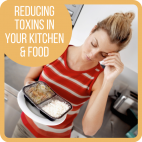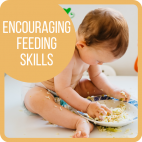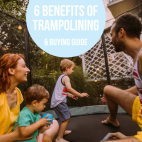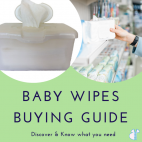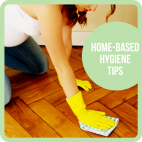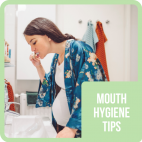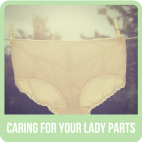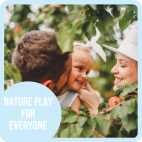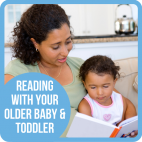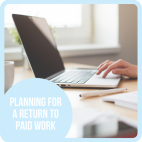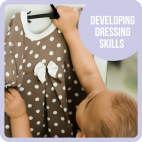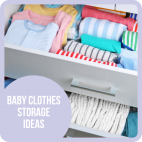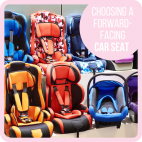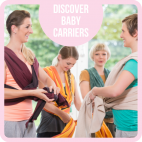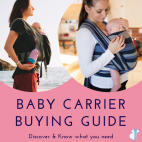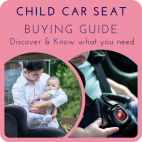Your little person running around and talking
Congratulations on getting well past the baby stage. Your active toddler will challenge you as well as delight you in new and unexpected ways.
They have dropped even more day sleep time, creating more time for play and running around. Since they were very young, they have been working on their hand skills will have now progressed to more refined hand and finger skills. They can make a small tower and hold a pencil to scribble, among other handy skills.
The connections in your toddler's brain grow vastly during this period, with many new skills emerging with the frontal lobe behind the forehead maturing and the left half of the brain (with the language centres) maturing. They are a little person who is gaining independence, yet they still need your help in many ways, especially to learn to navigate their big emotions. You may see the first signs of tantrums, which will be a life feature for some years to come.
During this period, you can look for signs that your toddler is ready to learn to use the toilet or potty. Like other skills, your child will do things in their own time, and you just need to set up the environment to invite them to participate when they are ready.
Your days will be busy whether you are looking after your child or going to work. As always, trying to understand your child's perspective, being patient, and having compassion for them and yourself will help life run a lot more smoothly. If you need help, try asking for it, your child needs other reliable adults and children of all ages in their lives. It would be best for everybody to regularly fill your cups socially, emotionally, mentally, spiritually, and physically. If you can find things that you can enjoy with your child, all the better; other times, you may need some time to yourself.
By your child's 2nd birthday, they will seem so big having come so far, yet still so small with a lot more development and learning to do. They will continue to build their skill sets, be inquisitive, learn about their body and their world through movement, experimenting, and engaging all their senses.
In some ways, parenting gets easier, such as not needing to be as hands-on, but each age has its challenges, and you will grow and need to adapt as your child grows. As you look back through your parenting journey, you'll forget the hard times, and memories of the good times strengthen. You'll have lived experience of the mantra 'this too shall pass'. There is a season for everything in life, and there is a beauty to the flow of life.
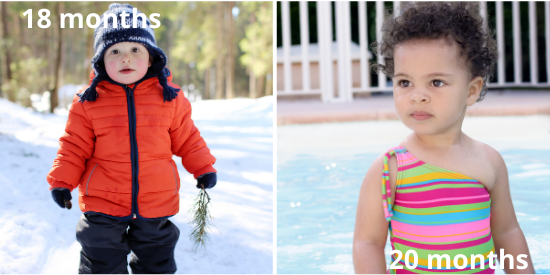
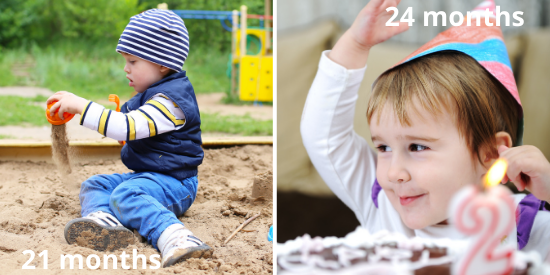
Your toddler has their own ideas about what they want to put into their mouth, and it is not always what you want them to. So this stage might be still needing you to continue your life lessons about ‘edible’ vs inedible.
When you find yourself frustrated that your toddler won’t eat, remember that it’s your job to offer, and it’s their choice to eat. Sometimes if you relax about the food, they will too and be more willing to engage and play with their food. Playing with food may be your toddler’s way of exploring it before deciding to try it. So when you catch yourself reciting the ‘don’t play with your food’ mantra you might have heard so many times as a child, try to move your thinking to ‘why not?’.
Your toddler’s relationship with food can often leave you puzzled. They can easily move through phases of love and hate with certain foods. It can be hard to keep up. Sometimes, this is related to food intolerances, where their body is telling them ‘no’ based on a past experience with that food. Sometimes, your toddler exercises their independence muscle, wanting to make their own choices and control their experience. If your toddler is gradually expanding their ‘list’ of accepted foods and there is a variety of healthy foods included in the ‘list’, you are headed in the right direction. Keep trying by offering new or previously rejected foods with foods you know they will eat, then leave it up to them to explore.
You’ll need to feel your way around what your boundaries are around food, such as enforcing set meal times vs being ok with grazing/snacking or somewhere in the middle. You may need to navigate your feelings around wasting food or ‘healthy’ vs ‘unhealthy’ foods. Either way, you can be sure that your toddler will trigger you in some way around food, diet and mealtimes. This is an opportunity for growth when you explore and sit in the feelings before choosing how to move forwards.
When it comes to food, variety is key. See food as both nutrition and a sensory tool for exploring different tastes, textures, temperatures. Of course, Mealtimes will continue to be messy as your child explores food with their hands and continues to try out spoons and forks. But, with practice, you will be surprised at how your child can manage to use small utensils (or easily switch back to fingers when needed).
It’s easy to put pressure on yourself to get loads of vegetables into your toddler. Whilst nutritious food is important for their growth, having a positive relationship with food is probably more important. Where healthy eating is ‘normal’ within your household and fun and engaging, they will want to be part of it. Try offering vegetables (raw or cooked) on the table whilst the rest of the dinner meal is cooking. Then serve up the rest of the meal once cooked. Another option is to offer veggies as part of the lunch meal and then offer something simpler and easily accepted for dinner. Getting out into the garden to plant, nurture and harvest veges and greens can be a great way to get your children interested in fresh vegetables. Also, getting them involved with cooking the food can also be a way of engaging them to eat more of a variety of foods. KiddiKutter have great, safe, kid-friendly knives which can get your little one engaged in the kitchen. Grab one now (for 10% off, use coupon code: babypeg) to have handy to use time and time again over the coming years.
There are tonnes of websites or groups to access different recipes to try with your toddler. Try to provide food options that include a range of coloured whole foods (eating the rainbow) and plenty of healthy fats, including omega 3s and fermented foods. This will help your toddler have a diverse gut bacterial population for general health, plenty of energy, and various nutrients to assist with growth. For example, there is some evidence that the essential ingredients for bone and teeth development are not only calcium, but there needs to be vitamin D, vitamin A and Vitamin K2 for the body to accept the calcium into the body where it is needed.
Make sure you are offering drinks of water throughout the day by having a cup of water at each mealtime and ensure they can freely access a bottle of water at all times.
Your toddler may still be emerging their first set of 16 teeth through this stage which can increase fussiness with foods whilst also helping them develop better biting and chewing skills. Starting from 23 months, your toddler will be emerging their last 4 teeth to complete their baby set of 20 teeth. It can be rough whilst the second molars finally emerge, or your toddler may cope like a champion.

Your active toddler seems to have energy for days, much past your point of exhaustion. It seems like, especially when you were looking forward to some adult time before bed, is when your toddler is just not going to sleep. What starts as a calm, set down routine can easily turn into frustration and tension.
As a rough guide, babies between 18 to 24 months old may have 1 or 2 daytime naps for around an hour each (averaging around 4 hours awake time between naps) and during the night, an average of 9 -12 hours. In total, this is 11-14 hours (however, a range of between 9 and 16 hours may be appropriate). As always, the averages serve to give you an idea of what the awake/sleep rhythms of your baby's day might be, but each baby will be unique in their sleep needs. You'll know by now if your baby tends to need more, less or an average range of sleep to function. They may have always been that way, or perhaps their sleep needs have changed over time to a degree.
Your toddler may be dropping from 2 naps to 1 during this stage of their development. You may have noticed by now that each time they are dropping a sleep, it is always a transition period for both of you. Just when you think your days and their sleep needs are predictable and manageable, this is often when they change. With less day sleep comes more time to play and more opportunity to do new types of activities during your day. Don’t be tempted to overdo things, though, in your excitement for this new phase. While they are dropping a sleep, try to incorporate calmer activities into the day to balance the higher energy activities. This could help your toddler to avoid meltdowns related to being overtired. If you are having a busy day in the morning, expect they might need some extra nap time during that day and create an opportunity such as pram time, carrier time or car travel time where they can get some catch-up rest.
When it comes to the evening wind down, turning off screens at least 2 hours before bedtime, eating at least an hour before bedtime and allowing the light levels to dim is a good start. These simple things allow their melatonin hormones to be released and give their body some time to start moving their energy to digestion mode before lying down to sleep. Getting the dinner meal sorted early and in a calm environment that promotes family interactions can make all the difference in promoting a successful bedtime routine without everyone getting overtired or overstimulated. Having this consistent bedtime each night helps your toddler feel reassured that everything is right in the world and their body can trigger the hormones needed for sleep.
If you have a high energy toddler, who needs some extra help to wind down, try the following:
- keep the bedroom free from too many toys (especially noisy ones, unless they play bedtime music),
- introduce bedtime chats, stories or books,
- Keep rooms dimly lit and with only ‘red’ spectrum light sources,
- Try progressive muscular relaxation (pitched to their level of language)
- Calming touch such as massage or the weight of your hand on their chest or the weight of their blanket or sleep sack to calm their nervous system
The night stretches of sleep may also have become longer, and at the same time, they can also commonly experience a sleep regression. Regressions and nighttime waking can be related to teething (particularly through the emergence of the molars), during development leap times, and if they experience night terrors and nightmares. It is normal for toddlers and young children to seek reassurance from their parents at night through closeness, touch, and they may well continue to ask for night feeds.
If your baby's sleep hasn't improved as much as you expected by this stage, feel comforted that most parents are thinking the same thing - when will they sleep?! Rest assured that your toddler’s sleep is directly related to their continuing growth and brain development. They are developing their ability to consolidate their sleep, particularly over their first 6 years. If you loosen your expectations and attachment to the idea of "sleeping through the night" as the holy grail of parenting, that is exactly when things seem to flow better at night. Embracing your baby’s unique sleep needs without comparison eases your anxiety and worry. Your baby is so tuned into your feelings and emotions that this change in you may be the catalyst for the whole family to get a better night’s sleep.
You may be considering a toddler bed at this stage or moving to a floor bed due to your toddler’s new climbing, movement skills and determination to explore their independence. Explore all your options and see what works for your family as a whole. Many families continue to enjoy co-sleeping or bed-sharing well into their childhood years. This just one option and choice you could make if it works for you. If you are getting run down with the demands of looking after a toddler (plus other children, perhaps), nothing will help you more than going to bed earlier. Extra sleep can completely change your days. That new TV series, that news feed, that housework can wait. If there’s a lot in your head, write it down in your planner and tackle it in the morning with a fresh perspective.
Your toddler will be developing confidence with mobilising on uneven surfaces, stairs, trying to jump, running and general movement activities. Whilst they are more competent and less likely to hurt themselves than previously, they will still need to be watched closely especially when getting tired approaching nap/sleep times.
As previously, ensure all potentially harmful products or items are out of reach. Even then, it’s not time to relax, you’ll need to watch them since they will start to work out they can move furniture to help them climb or reach something they want.
It will help your peace of mind to move any hazardous or potentially breakable items well out of reach in overhead cupboards or a locked storage area.
If you can help it, try not to encourage or introduce TV watching until at least 2 years. This recommendation is universal amongst child development experts. Toddlerhood is all about learning about their body, movement and interaction. When planning your day, aim for a maximum of 1 hour of sedentary activities such as reading and stroller riding and incorporate lots of active movement (at least 3 hours is a good guide). Toddlers thrive in sunny outdoor environments. The vitamin D from the sun is essential for a huge amount of bodily processes. Being outside provides exposure to many important experiences such as:
- different visual stimuli (seeing objects both near and far is great for visual development)
- free play and movement opportunities (bike riding, water play, sand play)
- exposure to bacteria and natural plant chemicals
All these experiences help their body learn about the world, their place in it, different ways they can experience their body, build immunity and promote overall health and wellbeing.
Exposure to other children can result in more colds and coughs making their way home, at least initially until their immune system matures. The best thing to do if you can’t avoid their exposures is to build and support their immune system. You can think of it this way, any bodily energy they are putting towards fighting illness is energy being taken away from growth. The time they spend unwell is time they are missing out on play and movement. This is why a strong immune system that includes a healthy gut is important and will lessen the impact of any dis-ease they experience.
As always, having a supply of basic medicines and a way of checking temperatures is essential, especially as children seem to get worse in the evenings when they are unwell. At this age, you might find you are at the doctors more than you would like. Common illnesses include colds, coughs, diarrhoea, vomiting, ear infections, and skin infections. Young children can quickly become dehydrated with diarrhea and/or vomiting, so it is important to get them to take fluids however you can. This is where continuing breastfeeding for as long as you can and aiming for at least 2 years, will be beneficial. An unwell toddler, who is refusing food and water, may accept breastfeeds to help them recover. If your child is having persistent skin rashes or eczema symptoms, this can either be something coming in contact with the skin (such as chemicals in skincare products or washing detergent) which is damaging the skin and/or a reflection of their gut health (affected by food intolerance or allergies or environmental toxins). As well as seeking medical advice, it's a good time to do a review of everything you are using on or around your toddler and look for signs of any food triggers including the common culprits, dairy, eggs, gluten, soy and nuts.
It is important to keep going to the recommended "well-baby" visits to check everything is on track with their growth and development. If you have any health concerns or feel something isn’t right with their development, it is better to seek medical advice sooner rather than later. Health Direct offer an Australia-wide after-hours service to call to talk to a nurse about any health concerns and also access advice from a doctor when this is needed.
Even though kids will develop at their own pace, it is a good idea to take notice of what other toddlers of the same age are doing. This is not because it is a competition, it is more to help you identify and act if something doesn’t seem right with your toddler. When there are developmental delays, it is far easier to seek advice and therapies sooner rather than later. Services prioritise younger children simply because early intervention works and the earlier you start, the better your outcomes. An example is a toddler who has a blockage in their ear that is affecting their hearing. If this goes untreated, their language and speech development can stall or they can develop a speech impediment. This can be subtle at first, then become noticeable, especially once they start spending more time around their peers. Even after their hearing is restored, they can need speech therapy to catch up or correct any acquired speech or language issues.
Whilst some developmental delays can be more obvious (such as gross motor skills), others can be harder to spot early. It is common to see children with poor core strength, poor body awareness, hyper or hypo-sensitive to touch/auditory/visual stimuli. These kids can benefit from Early Intervention Occupational Therapy as well as an investigation into any medical causes for their difficulties. If your toddler is behaving 'badly', keep in mind that behaviour is a reflection of need, when there are unmet needs, there is a corresponding behaviour. The Raising Children's Network has some resources to explore in their section on Toddlers: Behaviour, you can also check out Janet Lansbury's website, and Pinky McKay's Toddler resources & Toddler Tactics book.
Given the increasing prevalence of autism, it is important to be aware of the early signs including an inability to follow eye gaze or someone pointing, lower frequency of looking at another’s face, lack of attention to visual stimuli and increased mouthing of objects. If you notice these or any concerning signs in your child, educate yourself on the other signs of autism and seek help sooner rather than later. Autism Awareness Australia has information for parents of toddlers who are concerned.
Hygiene for toddlers is all about bathtime, transitioning out of nappies and starting toilet learning, brushing teeth and learning how to wash their hands.
With an early enough bath time, your toddler will take the opportunity to play and explore how their body feels in the water. There are heaps of great bath toys available to buy or you can find everyday items you don't mind getting wet that will dry out, for them to play with. When looking for toys, make sure they can take some rough treatment and that you can completely dry them out. Squirt toys are great for a couple of baths, but you'll end up throwing them out soon after, as they will quickly become mouldy. Shop for bath toys at The Stork Nest, Lime Tree Kids, Cherub Baby, eBay's range of Bath Toys or Amazon's range of Bath Toys.
Your toddler will be confident (probably over-confident) in the bath now, but even so, you can't leave them unsupervised. You will also need to be within reach in case your impulsive toddler slips or falls, even in shallow water. Some toddlers might protest at getting their hair washed or even wet. This might be because they don't like the sensation or just because they are trying out their sense of autonomy. They will still need your help and or supervision getting in and out. A non-slip bath mat is a good idea for drying feet and absorbing the bathwater which seems to go everywhere. If your bath is slippery, a rubber bath mat can help, but it has to be pulled up and dried out in between use, otherwise, it will get mouldy and unsafe.
Your toddler may attempt to dry themselves a little once you put a towel over them, and will usually insist on standing while you dry them (unless they want to be carried/cuddled). A kids-sized hooded towel makes drying easier while standing. Shop for kids hooded bath towel on eBay & Amazon Au.
Most toddlers will show signs of wanting to stop using nappies sometime around 2 years old. It is easiest to do this in the summer months, so this may fall just before they turn 2, or sometime after. In summer, you can try no nappy time outdoors if you have a suitable area, that way, they can develop more of an awareness about when they need to go, without the worry of a big clean up. Even when they are getting the hang of daytime dryness, night dryness will still be some time away. If they start to wet through their night nappy, try going up a size, and start encouraging them to do a wee before they go to bed. Some common signs of readiness are:
- dry nappies after several hours of use or overnight
- signs or communicating that they are weeing or pooing
- showing an interest in family members using the toilet
- agreeing to try the toilet etc.
There are many ways to approach toilet learning and loads of products that can help. You can introduce a potty and/or set up your toilet with a stool or steps with a toddler seat. If you buy a stool or steps (such as the Skip Hop Double Up Step Stool or Mocka Learning Tower), these can also be used at the sink for hand washing and tooth brushing (Amazon Au also have some options here). For toddlers, the steps are a better height for standing at the sink, as they get older, a single step will be enough and takes up less space. Shop the range of toilet training products from The Stork Nest, Lime Tree Kids, Amazon Au, & eBay.
You'll want to be brushing your toddler's teeth ideally twice per day to keep them clean and healthy. Your toddler won't have the hang of spitting out the toothpaste just yet, so use a baby toothpaste and soft brush for now. Lime Tree Kids has a great range of kids dental care products to check out. Toddler's love music, so if you are struggling to keep them interested and engaged, why not download a free toothbrushing app such as Brush Teeth with The Wiggles. To help with brushing and washing hands, you can sing while you go "this is the way we wash our hands/brush our teeth (repeat)...before we go to be-ed".
Your toddler can focus on an activity of choice but still finds it difficult to be directed by an adult, however, their understanding of language (being able to recognise between 200-500 words) and simple 3-4 word instructions are improving. This is an age where their language centres are very active. They may be attempting to say as many as 50 words and putting 2 to 3 words together to make simple sentences. They might be working on saying certain sounds such as ‘p’, ‘b’, ‘m’, ‘w’ sounds, improving their ability to be understood in the world. However, their difficulties with communication can result in delays in getting their wants and needs met as you struggle to figure out what they want. This can be a frustrating time for everybody when miscommunications lead to tantrums and sometimes other behaviours such as biting or hitting. Here, using simple sign language can help as well as consulting with speech and language resources such as https://ican.org.uk. If your todder is not speaking as much as you would expect, keep exposing them to language as much as possible, this can be done by reading together every day. If you're after ideas on what books to buy, check out our blog on Award-Winning Australian Authors & Books, then be sure to check out the topic article on Reading with your older baby & toddler.
They might start to make up their own games, showing their creative flair, personality and clearer likes and dislikes. Their pretend play with toys and objects is developing such as wanting to pick up a baby doll and rock her or take care of her in some way. Here you will start to see your toddler imitate the things they have seen you and those around them do. You will start to realise that they are absorbing everything like a sponge even when you don’t think they are paying attention or listening. Parents beware!
Your toddler can now discover their sense of self and starting with recognising their reflection in a mirror is them and not another baby. They are learning to empathise and play with others rather than just having an ego-centric view of the world. You will start to notice they are developing a clear sense of right and wrong, a strong will, they have a conscience. This extends to them realising that their family is different from others and friends are different from family.
They are still developing their sense of body awareness so will seem to move constantly trying out new ways of moving and controlling their body (running, stairs, climbing, jumping, rolling, walking backwards etc), trying out different ways to touch (eg. hard/hitting, soft/gentle), experimenting with how different materials feel and move (eg. water, sand, dirt, grass, carpet). At this age, the more they can move and experience in their body, the better their foundations for later learning. This is a great time to consider buying a trampoline and outdoor play equipment - Vuly Play offer a great range made for the tough Australian conditions or if you buy a Springfree Trampoline you get an unbeatable 10 year warranty ensuring the trampoline will last their entire childhood and then some. Check out Goba Play for quality swing sets and climbing domes. Trampolines are not only fun, encouraging endless imaginative play games, trampolines are great for supporting healthy physical development including strengthening bones and lower limb/core muscles, coordination, balance, vestibular skills and much more. Gone are the days of un-netted and exposed spring trampolines which have caused too many trips to the emergency department. They can jump as high as they want and crash into the nets to their heart's content - just make sure the door is zipped up or secure. You can even add accessories including a basketball hoop to work on ball skills whilst jumping. More advanced skills such as alternate foot climbing/stairs or hopping on one foot will come later, but these are great skills to practise on the trampoline.
Getting outside for at least one hour per day will give your child an opportunity to get some vitamin D (from the sun) and explore the natural environment which can also benefit the development of their immune system. Any activity which is going to develop their sensory systems, motor/movement/balance practice, or expose them to how things work is going to be a hit at this age of discovery.
You may be getting ready to celebrate your baby’s 2nd birthday. Perhaps you are planning a birthday party to invite some little friends and family to celebrate. This is a great opportunity to use your BabyPeg member page to update the info in BabyAbout and add items that your nearly 2-year-old is loving or needing at the moment.
Top ideas for 2-year-old presents include:
- 7 to 20 piece puzzles - Toymate puzzles for Toddlers/kids
- movement activities (scooter, balance bike, swings, trampoline, balls) - check out Vuly Outdoor Play Products (Find in BabyNew here), Springfree Trampoline, Wheeled Toys & Outdoor Toys from Toymate
- Water Play items to encourage swimming and a long soak in the bath - Sand & Water Tables and Sandpits & Pool & Beach toys
- Floor play Toys such as a train set, bilibo, wooden toys & pretend play
- Duplo and other building blocks (making 3-6 block towers) - Check out Duplo at Toymate, Construction/building Toys
- Pretend play toys such as dolls, cars, kitchenette etc - Check out Pretend Play Toys at Toymate
- Mr potato head
- Art and craft and messy play supplies such as playdough, crayons (for scribbling), finger paint, mud kitchen - Riot Art & Craft Supplies for kids or Toymate Art & Craft range
- Simple books - baby books from Toymate; Children's books from Amazon Au (shop by age)
- children's music for the car or home (streaming service or CDs) - some favourites are The Wiggles, Genevieve Jereb, Peter Combe and ABC Kids/Playschool songs - you can access these through an Amazon Music Unlimited Free Trial or search for Children’s Music Sing-Along CDs
- Percussion & other musical toys/instruments - Toymate & Amazon Au Children’s Musical Instruments for ages 1-2
- Toy trolley to push around - Such as the Brio Early Learning Toddler Wobbler or a shopping trolley
- Mocka Creative play products will inspire many hours of creative fun as well as help you organise the kids zone in your house
This is a high energy, fun, chaotic age, you may as well have fun with it too and enjoy the ride.
Your child is now able to wear anything but may object to some materials (man-made), bulky seams or tags due to the feeling on their skin. Tight-fitting shirts, shorts or socks can help children who are sensitive to clothes by providing gentle pressure on the skin and reducing rubbing. Be patient and don’t force any clothes on your child that they object to. They are at an age where they will start to develop preferences and want to start choosing for themselves and can communicate what they do and don’t like. Let them start to have some control over their lives in small ways such as choosing an outfit out of a small number of choices.
Make sure clothes give a full range of motion for movement so as not to restrict play activities. Choices such as dresses and skirts can be cute, but might also get in the way of climbing and running or your toddler’s view of their feet whilst they are developing body awareness.
It is still important to let your child walk/run without shoes to further develop their sense of balance and body awareness, however, they will require at least one good pair of shoes they can run in comfortably with space at the toe to grow into. It can be handy in the warm months to also have a pair of sandals that are secure around the foot and can get wet during outdoor water play.
Toddlers can be rough on their clothes and the stains will have you quickly learn how to get ‘hard to move’ stains out within your wash routine. You can pick up some great tips for washing at the Clean Cloth Nappies website and Facebook group.
Car transport will continue to require a forward-facing or convertible car seat unless you’ve been able to keep the seat rearward facing without your child protesting too much. Longer car trips require a good supply of food and drink, music to listen to (Play School and the Wiggles are classic kid-pleasers), a travel activity tray, ideas for games to play in the car and using a screen as a last resort.
You still might find your stroller handy for longer walks or days out but now that your child is walking confidently, there are other options too.
- If your child still loves the stroller but is outgrowing it, consider getting a version that suits older children such as a Baby Jogger city mini or larger.
- You can continue using the baby carrier with a front or back carry, however, this gets heavy and your toddler may prefer to explore instead, so this has limited uses by this age.
- For bushwalking, there are hiking carriers to comfortably carry your toddler over longer distances.
- A Beach wagon will be invaluable for trips to the beach or park
- Consider a bike trailer or bike child seat if you enjoy bicycle riding
- There are balance bikes suitable from 18 months and trikes including smart trikes (that has a parent push handle). The Cruzee or similar lightweight balance bike is great and will last for years. Why not let your toddler choose their favourite colour - this is a great idea for a 2nd birthday present too.
- From 18 months, your child might be able to use a 3 wheel scooter especially if you have older children showing them how.

